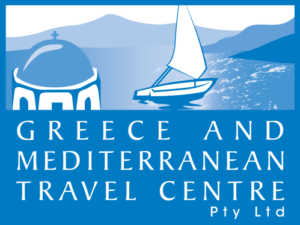Things to do
Zagreb Cathedral: One of city’s landmarks, a must-see, is the Zagreb Cathedral of the Assumption of the Blessed Virgin Mary, located on the Kaptol, dating back from the 13th century. Formerly known as St Stephen’s Cathedral, today it is dedicated to the Assumption of Mary and to kings Saint Stephen and Saint Ladislaus. It is the tallest building in Croatia and also the most monumental sacral building in Neo-Gothic style southeast of the Alps.
St Mark’s Square: Named after the church in its centre, it is now the home of the Croatian Parliament and Constitutional Court. The church was built in the 18th century on a Roman basis and completed as a hall church. The south portal is the most expressive gothic sculptural creation in this part of Europe. Among other things, the Church of St Mark is known for its multicoloured roof tiles, creating the crest of Croatia, Dalmatia and Slavonia on the left side, and the crest of the City of Zagreb on the right side.
Ban Jelacic Square: The central square of the city, situated in the heart of Zagreb. This is the most common meeting place for people in Zagreb, named after the 19th century ruler Count Josip Jelacic. His large statue on a horse is erected on the square.
Dolac: Just a few dozen meters from the Ban Jelacic Square is Dolac market, “the Belly of Zagreb”, an open-air farmers market. It is a great place to buy fresh meat, dairy products, vegetables, seafood, and Croatian artisanal items.
Ilica Street: one of the longest and busiest streets in Zagreb as well as the city’s main shopping street. Here you can find all kinds of shoes and clothes stores, the finest local products, food, and beverage shops, and much more. From the world-famous brands, boutiques of the local designers, and luxury jewellery shops, to pastry shops and fast-food restaurants.
Tkalciceva Street: Considered to be the most attractive street in Zagreb. It houses many restaurants and cafes, as well as traditional local shops, and it is one of the busiest and most vibrant streets in the city centre.
Upper Town (Gradec): The Upper Town area has changed very little since the 13th century. Its shape and layout of the streets have not changed at all. However, the fortification system has been destroyed due to the development of the city and its growth. During the 17th and 18th centuries, the Baroque reconstruction took place. Old wooden houses were demolished, while lavish palaces, monasteries, and churches took their place. Today, the Upper Town is a political centre of the city and home to many museums and churches.
Stone Gate: The gate was built in the 13th century and has since become a major attraction. It is the city’s most beautiful shrine. The shrine in the passage was established in the 18th century. On the 31st of May 1731, a great fire destroyed Gradec, burning almost all the houses to the ground. At the time, a painting of the Virgin Mary was displayed in the passage. Miraculously, the picture remained intact and undamaged by the fire. Since then, the citizens of Zagreb adopted the Virgin Mary of the Stone Gate as their patron saint. The 31st of May has since been celebrated as Zagreb City Day.
Lotrščak Tower: Once guarding the south entrance to Gradec, Lotrscak Tower is, together with the Stone Gate, the only remaining part of the medieval fortification system of the Upper Town. With its four floors, the tower reaches a height of 30 meters. There used to be a bell on the top which would ring every night before closing the gates. It also alarmed the citizens of a robbery or danger. Today, however, the tower houses a cannon that is fired every day at noon, from the top floor.
Lower Town: This is the urban centre of contemporary Zagreb. It includes a series of green parks and beautiful historicist palaces. Historicism (or revivalism) is a style in architecture that draws inspiration from recreating historic styles or imitating the work of celebrated artisans. In layman’s terms, historicism copies previous architectural styles. In Lower Town, there are examples of Neoclassical, Neo-Romanesque, Neo-Gothic, Neo-Renaissance, and Neo-Baroque architecture.
Green Horseshoe: The most remarkable result of the 19th-century urban planning in Zagreb is a patchwork of seven squares and parks. Placed one next to the other, they form a shape of a horseshoe. The area is locally known as Green Horseshoe. It features several historicist palaces housing museums, galleries, ministries, faculties, and other significant state institutions.
Republic Square: Established more than 120 years ago, it is the leading, oldest, and largest theatre in the country. It contains three permanent ensembles – opera, ballet, and theatre.
Zrinjevac Park: the most central park in Zagreb. It is one of the main spots during the Christmas market, a.k.a. Advent in Zagreb. In summer, the park turns into a “green beach” where people can lie on a deck chair and pretend they are on a beach.
New Zagreb (Novi Zagreb): Located south of the river Sava, New Zagreb was built only after World War II. There are several bridges over the river Sava that connect Zagreb and New Zagreb, most notable being the Railway Bridge. Built in 1939 it is also known as Green Bridge or Hendrix Bridge because of its distinguishing green construction and the “Hendrix” graffiti, which reappears after every refurbishing in the last few decades. Due to this, it has become one of the icons of the Croatian capital. Recently, the bridge was updated with colourful lights that light up every time a train pass.
Maksimir Park: the “lungs” of Zagreb. The park was opened to the public in 1794, offering recreation and relaxation. It includes five lakes and numerous tracks and trails through dense forest. Among other attractions, Maksimir houses a zoo, football stadium, and various cafes and restaurants.
